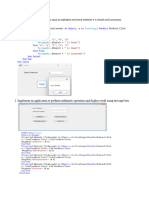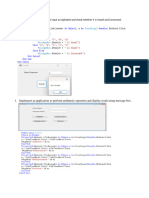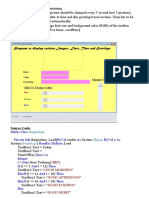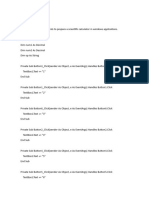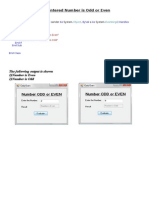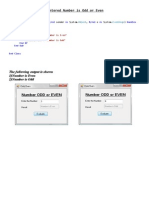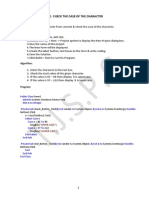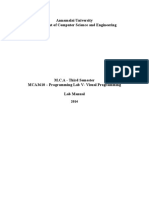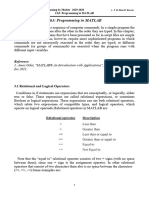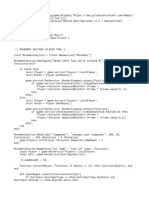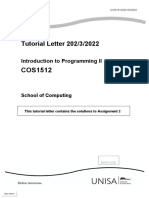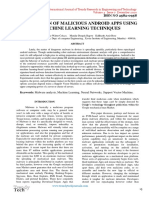0% found this document useful (0 votes)
15 views31 pagesVbnet
The document outlines a series of programming tasks for a Visual Basic .NET course, including creating GUIs for basic arithmetic operations, checking for vowels, determining voting eligibility, and generating Fibonacci series. It also includes implementations for sorting algorithms like bubble sort and insertion sort, as well as matrix operations. Each task is accompanied by code snippets demonstrating the required functionality.
Uploaded by
Gaurav singhCopyright
© © All Rights Reserved
We take content rights seriously. If you suspect this is your content, claim it here.
Available Formats
Download as DOCX, PDF, TXT or read online on Scribd
0% found this document useful (0 votes)
15 views31 pagesVbnet
The document outlines a series of programming tasks for a Visual Basic .NET course, including creating GUIs for basic arithmetic operations, checking for vowels, determining voting eligibility, and generating Fibonacci series. It also includes implementations for sorting algorithms like bubble sort and insertion sort, as well as matrix operations. Each task is accompanied by code snippets demonstrating the required functionality.
Uploaded by
Gaurav singhCopyright
© © All Rights Reserved
We take content rights seriously. If you suspect this is your content, claim it here.
Available Formats
Download as DOCX, PDF, TXT or read online on Scribd
/ 31

